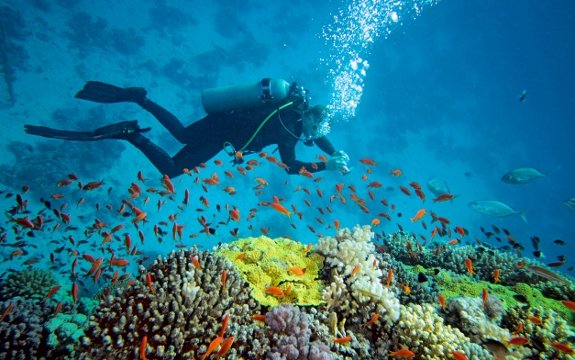Ocean Discovery: Possible Anthrax, MRSA Solution Found in the Sea

 The natural world is full of healing solutions waiting to be discovered. From the forest plants to living creatures beneath the sea, we have likely only begun to tap the natural healing resources around us. One researcher with the University of California San Diego recently found a new chemical compound from the ocean, one which they believe has the potential to treat deadly bacteria like anthrax and MRSA, and one which they are excitedly plotting to turn into a drug.
The natural world is full of healing solutions waiting to be discovered. From the forest plants to living creatures beneath the sea, we have likely only begun to tap the natural healing resources around us. One researcher with the University of California San Diego recently found a new chemical compound from the ocean, one which they believe has the potential to treat deadly bacteria like anthrax and MRSA, and one which they are excitedly plotting to turn into a drug.
William Fenical of the Scripps Institution of Oceanography and his team of colleagues found the compound on a microorganism called Streptomyces, which they first found off the coast of Santa Barbara in 2012. The compound, which they’ve since named anthramcimycin, shows promising results in the lab.
But, like many natural substances recently discovered across the globe, interest in this one came mainly from a large pharmaceutical company—one who funded Fenical’s research and no-doubt plays a significant role in Fenical’s hope that they can turn anthracimycin into a new antibiotic drug.
Fenical is partly responsible for founding the marine biomedicine department at Scripps and he says the seas are a “vast resource for new materials that could one day treat a variety of diseases and illnesses.”
As for anthracimycin, Fenical and others believe it could help destroy the antibiotic strains of bacteria like MRSA because it is an entirely new chemical compound, one such bacteria has not built up a resistance to.
MRSA, and other infections like it, have evolved overtime to resist treatment from traditional antibiotics. These infections are usually treated by doctors who throw massive combinations of antibiotics at them, hoping to find something that will sneak by MRSAs defenses and rid the body of the potentially disfiguring and even deadly infection.
Anthracimycin, because it’s new, could effectively treat bacteria that haven’t evolved to protect themselves against it. But, with time, antracimycin too could become useless against these bacteria that have amazing self-preservation tactics.
Fenical says:
“The real importance of this work is the fact that anthracimycin has a new and unique chemical structure. The discovery of truly new antibiotic compounds is quite rare. This discovery adds to many previous discoveries that show that marine bacteria are genetically and chemically unique.”
Solutions to Antibiotic-Resistant Infections
Fortunately, there are natural solutions to antibiotic-resistant infections. These solutions don’t involve a prescription or pills.
- Honey, in particular, has shown considerable promise in preventing infection of wounds (where bacteria like MRSA usually enter the body). In particular, manduka honey was able to stop one type of streptococcus bacteria from infecting wounds. It’s a known natural antibiotic, and one you can find at your local health food store.
- Turmeric is another antibacterial agent that doesn’t require a trip to the pharmacy. Like honey, it can be applied directly to wounds to prevent infection. Making a paste with water or even stirring the honey and
turmeric together can create a healing and protectant barrier to the skin.
- Also, researchers have found that lavender oils are able to inhibit the growth of MRSA infection. Applied directly to MRSA bacteria, the lavender oil essentially shut it down, annihilating the bacteria that continues to puzzle modern medicine.
While finding natural antibacterial sources is commendable, let us not forget about the system that exploits these resources by turning them into drugs for Big Pharma’s profit machine.
Additional Sources:
